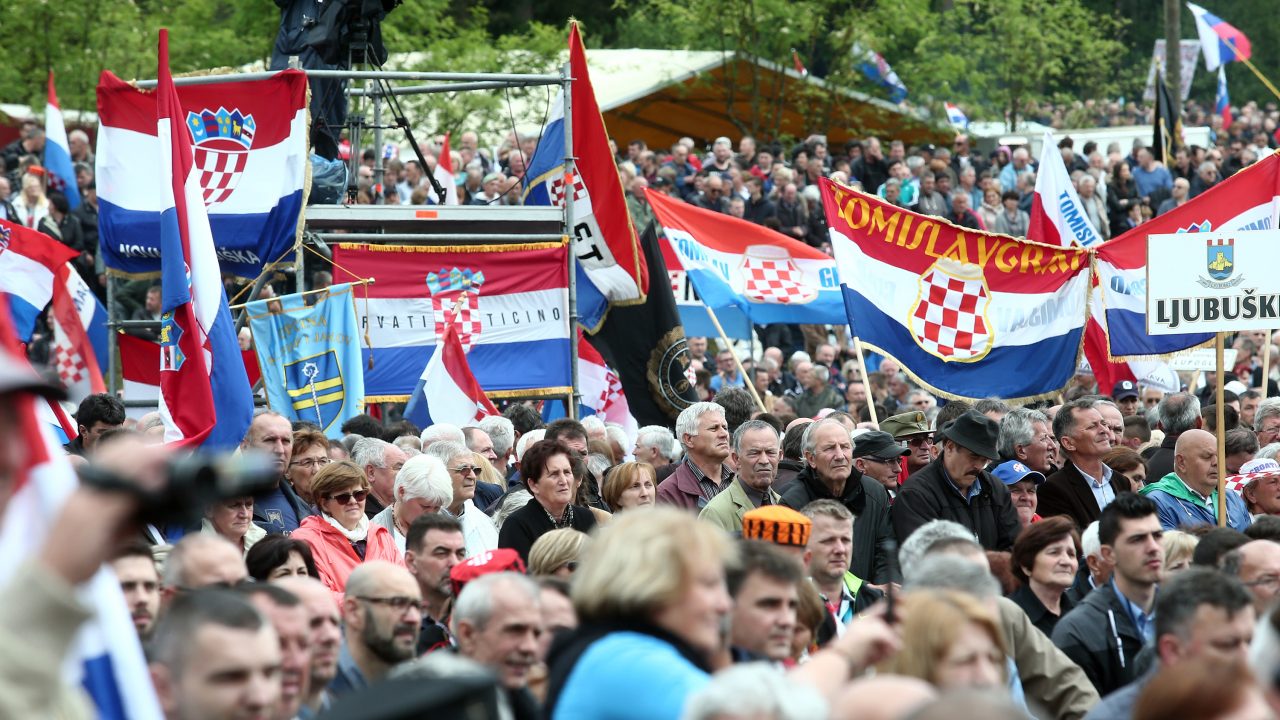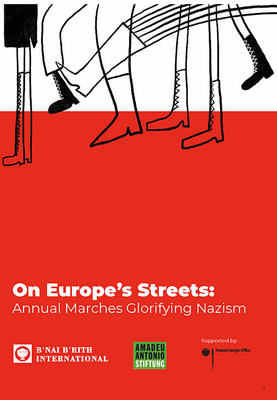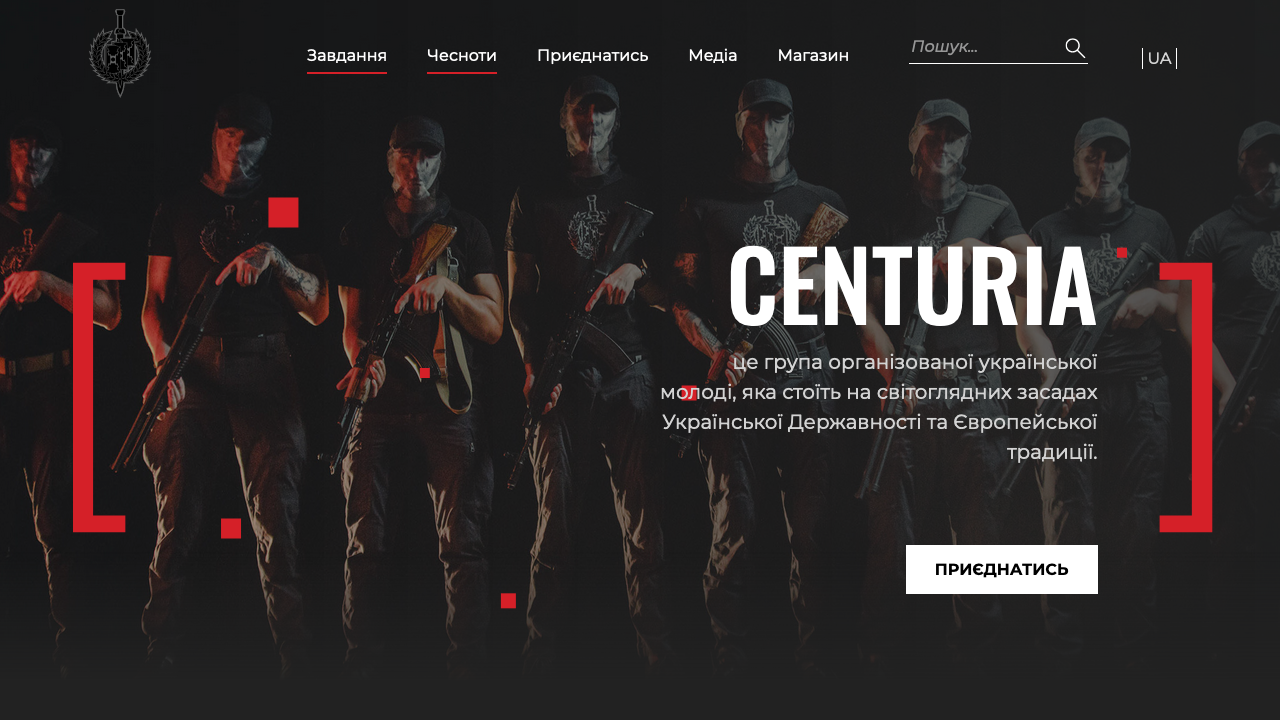
This text is an excerpt of the broschure „On Europe’s Streets – Annual Marches Glorifying Nazism“ by B’nai B’rith and Amadeu Antonio Foundation.
Memorial Service for the Victims of the Bleiburg Massacre (Gedenken an das “Massaker von Bleiburg”)
Location: Bleiburg (Pliberk), Austria
Date: A Sunday in early May
Context, themes, slogans
Each year, thousands of people come together to commemorate the Bleiburg repatriations. In May 1945, shortly before the unconditional surrender of the Third Reich, a group consisting of Croatian Ustaše and their sympathizers, German Wehrmacht and SS, Slovene Home Guard (Domobrani), Serbian Četniks, and
others – anticipating retribution for their war crimes – began to flee from the approaching Yugoslav Partisans. The group had planned to surrender to the British army, which did not accept their capitulation. Instead, they were disarmed at the Loibacher Feld (Libuško polje in Croatian) near Bleiburg in Carinthia, Austria and handed over to the Partisans. The prisoners were taken back to Yugoslavia. Along the way, tens of thousands were killed by the Yugoslav authorities, while others were interned and put on trial.
The meeting at Bleiburg has grown into a major gathering of Croatian ultra-nationalists. This takes the form of a Catholic mass and a commemoration ceremony by a memorial stone located at the Loibacher Feld. According to the far-right myth of these events, a massacre was committed by the partisans at the Loibacher Feld. However, there is no evidence that a massacre took place at Bleiburg itself. Reliance on a distorted narrative of a massacre serves to rehabilitate the Nazi collaborators of the Independent State of Croatia (NDH) and rewrite Holocaust history.
Persistence
The gathering goes back to the 1950s, but until the 1990s it was relatively small, bringing together only a few hundred participants, mainly from the Croatian diaspora. Since the dissolution of Yugoslavia, and Croatian independence, the event has grown significantly.
Organizers
The organizer of this yearly celebration is the Bleiburger Ehrenzug, an organization of Croatian exiles in Austria. The organization’s main field of activity is the memorial service, the promotion of revisionist ideas and the glorification of the NDH. On its logo, the Bleiburger Ehrenzug does not use the checkerboard of the modern Republic of Croatia, but that of the NDH. The same logo was used as a badge worn on the sleeves of the Croatian unit of the Waffen-SS and is featured on the memorial at the Loibacher Feld.
For many years, the event was officially a religious event, under the auspices of the Austrian Catholic Church. The Church rescinded its support in the 2010s following civil society protests. The event is heavily influenced and planned by the Catholic Church in Croatia and plays a central role in Croatian politics
and has been shown live on Croatian TV.
Number of participants
Peak numbers were reached in 2015 with as many as 30,000 participants. Before the COVID-19 pandemic, tens of thousands attended every year, in what several newspapers have dubbed “Europe’s biggest fascist demonstration.”
Spectrum and topics of participants
Participants include a who’s who of Croatian moderate to far-right political figures and clergy, thousands of organized far-right and neo-Nazi activists, as well as hooligans from almost all major Croatian football clubs.
The event has become a central feature of Croatian nation-building. Depending on the composition of the government, the Bleiburg Meeting has been at times held under the patronage of the Croatian par–
liament. The latter has also contributed to the financing of the event. High-ranking officials attend every year. For instance, in 2016, Deputy Prime Minister Tomislav Karamarko (HDZ) and Minister of Culture Zlatko Hasanbegović (HDZ) were present. Prime Ministers, and even former President Kolin–
da Grabar-Kitarović, have often visited the memorial a few days before the ceremony and laid wreaths. For the Catholic church, the archbishop of Zagreb, Josip Bozanić, led in 2015 “a holy mass for the troops and civilians,” attended by over 20,000 people. In 2018, a mass was led by the Archbishop of
Zadar, Želimir Puljić.
Since the end of the Croatian “Homeland War,” the march involves not only the flaunting of Ustaša/NDH symbols but also the glorification of individual war criminals or military units from the war and the flaunting of their symbols and flags. A monument to the Bleiburg repatriations was erected at Mirogoj cemetery in Zagreb, meant to serve as an alternate commemoration site, which makes subtle reference to Ustaša symbols.
European networking
In recent years, the event has also become an important networking opportunity for the Central European far-right, with a number of far-right and neo-Nazi activists from Austria, Germany and beyond attending the event.
Potential for violence/violent incidents
To maintain the pretense that it is a march of mourning, all participants are asked by the organizers to behave accordingly. At the same time, after the procession and mass at the memorial, beer tents and booths are set up, which raise the potential for violent incidents. In addition, attacks on journalists critical of the event, are commonplace.
Antisemitism and Holocaust denial
Through the memorial service and the open celebration of the NDH, people commemorate a fascist movement whose ideology was significantly influenced by National Socialism. One exceptional feature of the NDH is its concentration camp system which was run without any German assistance and included the biggest Holocaust-era extermination camp in Croatia at Jasenovac. The fact of a completely self-run concentration camp system by the NDH is unique. Whoever celebrates the NDH also celebrates its genocidal antisemitism, anti-Roma hatred and its anti-Serbian racism.
Civil society resistance
The Ustaša meeting at Bleiburg is in a sense very particular: a Croatian fascist gathering tucked away deep in the Austrian countryside near the Slovenian border, far away from all major cities, in the state of Carinthia which is not known as a hotbed of civil society activism. As a consequence, the event had long gone under the radar of the broader Austrian public.
This changed in the 2010s with various anti-fascist groups, often led by the Carinthian-Slovene minority, leading the mobilization against the event. This renewed resistance, including by Jewish and Roma groups, has led to the Austrian Catholic Church first rescinding its support for the event and now potentially leading to a ban by the authorities.
B’nai B’rith International has called repeatedly for a full ban of the march, as has the Jewish Community of Zagreb.
From 2020 onwards, an official counterdemonstration was co-organized by the European Union of Jewish Students, who, together with the World Jewish Congress and the Jewish Community of Vienna have taken action against the march.
Reaction by the authorities/bans:
For a long time, national and local authorities not only allowed the event to take place, but actively contributed to its dangerous nature by taking every possible step to make it proceed as smoothly as possible, even going so far as to allocate a special border crossing to participants of the march on the day of the event, and looking away when illegal symbols or Hitler salutes were being displayed. Thanks to mounting civil society pressure, this attitude has slowly changed.
After Austria’s Federal Parliament voted in 2020 to call on the Ministry of Interior to find ways to ban the Bleiburg Meeting, something that had always been legally possible, a parliamentary commission concluded that the event in its current form should not be allowed to take place anymore and that the memorial stone with its revisionist text should be removed.
However, the measures have not yet been put in place. In 2022, after the Commission’s report, the event was still allowed to take place, albeit in a much smaller format, in part thanks to the support of the Catholic Church. Alternate commemorations continue to be held in Croatia at Zagreb’s Mirogoj cemetery and at the Shrine of Croatian Martyrs in Udbina.

The report is now available to download (in English):
https://www.amadeu-antonio-stiftung.de/publikationen/on-europes-streets/
Excerpts from the report on Belltower.News will follow!
Part 1: The Marches
1. Day of Honor, Hungary
2. Memorial March for the Bombing of Dresden, Germany
3. Lukov March, Bulgaria
4. Blue Division March, Spain
5. Remembrance Day of the Latvian Legionnaires
6. Bleiburg Meeting, Austria
7. Rudolf Hess Memorial March, Germany
8. Iron Wake, Belgium
9. March on Rome, Italy
10. Independence March, Poland
11. Kohti vapautta and 612-march, Finland
12. Imia March, Greece
Conclusion to Part I: The danger of the marches
Part 2- Legal Analysis


